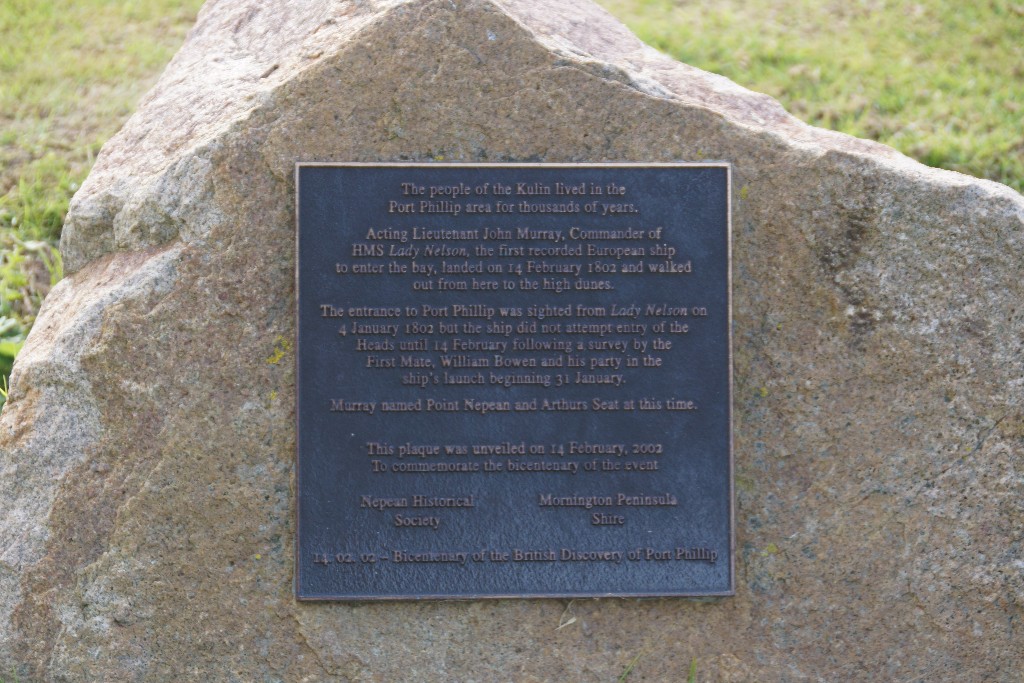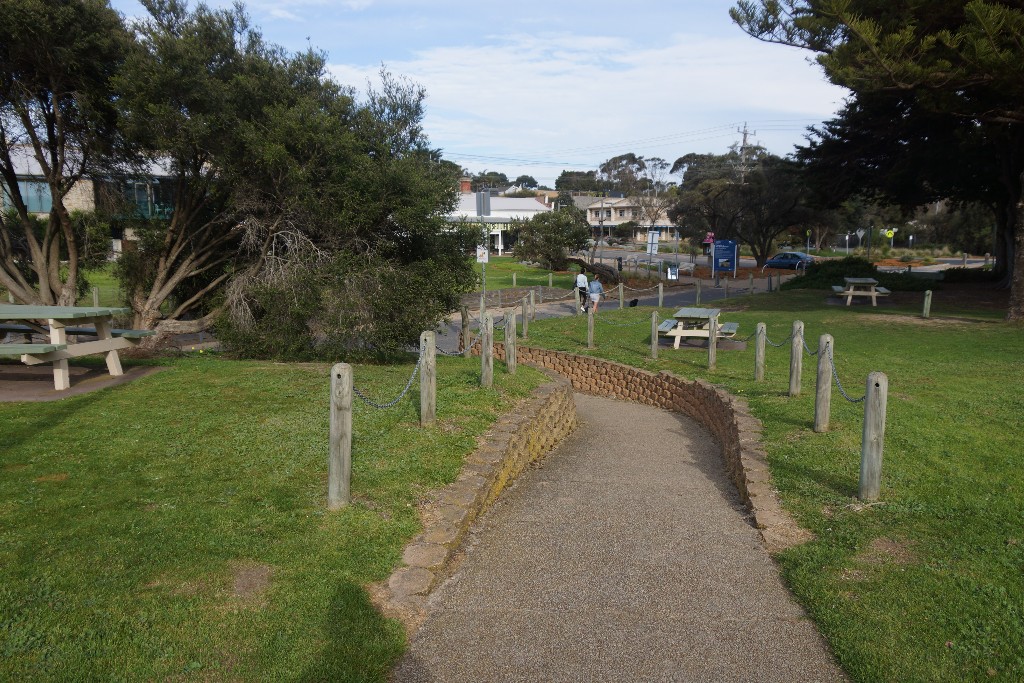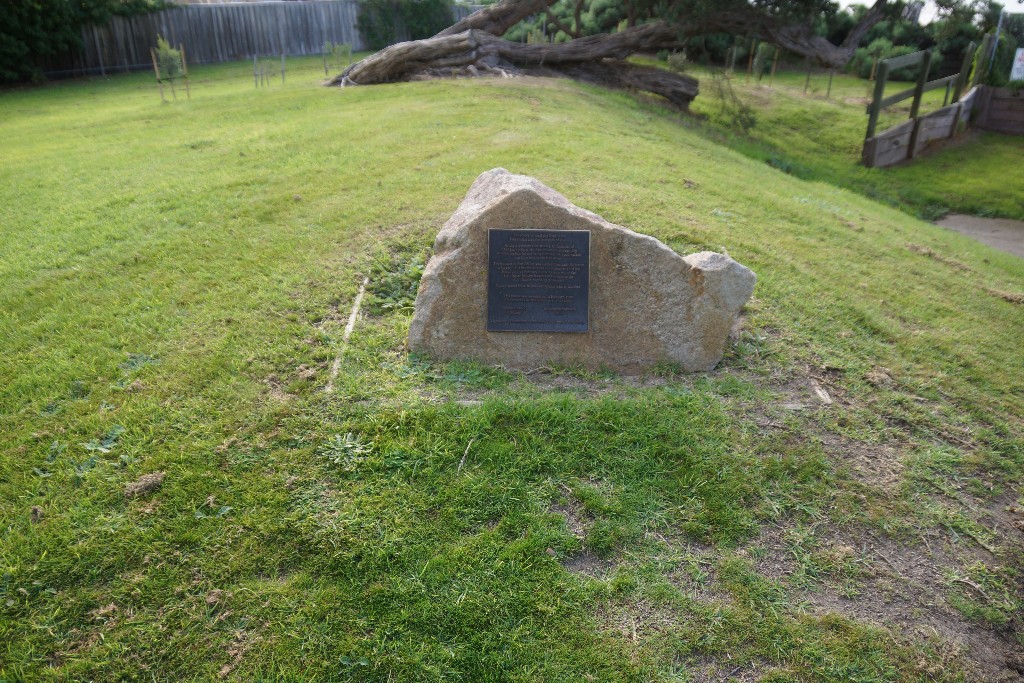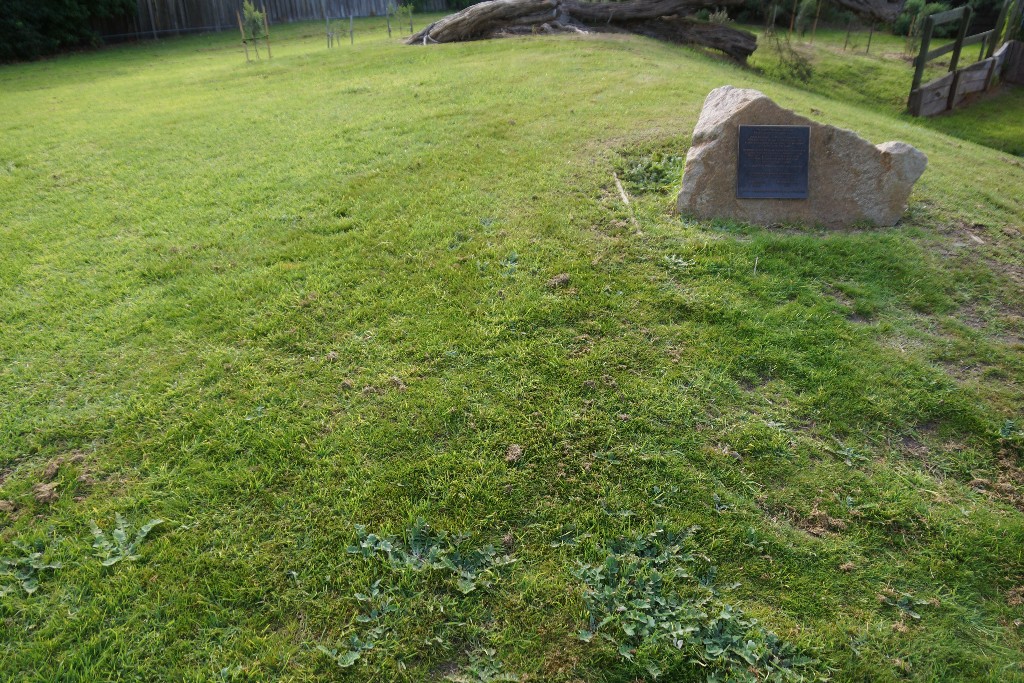Sited within the ‘WE Newton Reserve‘, at Portsea on Victoria’s Mornington Peninsula, a small rock housing a plaque commemorates the hugely significant event of the first documented landing of a European on the shores of Port Phillip Bay.
An extract of the plaque reads:
” . . . Acting Lieutenant John Murray, Commander of HMS Lady Nelson, the first recorded European ship to enter the bay, landed on 14 February 1802 and walked out from here to the high dunes . . . “
The following are extracts from John Murray’s Journal describing the countryside that greeted them at Portsea, noting that ‘Swan Isles’ are now known as Mud Island:
” . . . At half-past 3 P.M. we got to anchor in a sandy cove in 7 fathoms water, bottom fine sand–Swan Isles bearing north-east by north distance 5 miles, a bold rocky point which I named Point Paterson east-south-east 1½ miles, a long sandy point named Point Palmer west, 1½ miles, and the nearest point of the shore south-west ½ of a mile distant.
“I went on shore and walked through the woods a couple of miles. The ground was hard and pleasant to walk on. The trees are at a good distance from each other and no brush intercepts you. The soil is good as far as we may be judges. I saw several native huts and very likely they have burnt off several hundred acres of ground. Young grass we found springing up over all the ground we walked; the only birds we saw were a few parrots. We found some shells on the beach and returned on board. I have named this harbour Port King* [* Governor King afterwards renamed the harbour Port Phillip in honour of the first Governor of New South Wales.] in honour of Governor P.G. King under whose orders I act. Set a third watch of the people with an officer. In the morning sent the gig to Swan isles for swans and on board we caught a few rock fish. At noon the gig returned with 3 live and 4 dead swans.
“Tuesday, February 16th. After dinner I took a walk through the woods of this part of the country, attended by one soldier and our carpenter to examine the wood. To describe this part I walked through is simply to say that it nearly resembles a walk on Blackheath and the Park if we set out of question the houses and gardens of the latter. The hills and valleys rise and fall with inexpressible elegance . . . “
Source: Excerpts – ‘The Logbooks of the Lady Nelson’ – by Ida Lee – Chapter 6 – published 1915
The pier, beach, and village of Portsea are all within a few metres walk from this historically significant reminder of the beginnings of European discovery and occupation of ‘Port Phillip’.
Facilities available at ‘WE Newton Reserve’ include: barbecues, picnic tables, playground, public toilets, water fountain, bench seats, and rubbish bins.
Helpful Hints:
– Within Town Centre – obtain Directions here
– Beach Access
– Car Parking is available at various locations within the village
Discover Portsea:
– Shopping
– Facilities available at Portsea include:
Sorry, no records were found. Please adjust your search criteria and try again.
Sorry, unable to load the Maps API.
- Off Street Parking
- Big Rig Access
- Sealed Road




